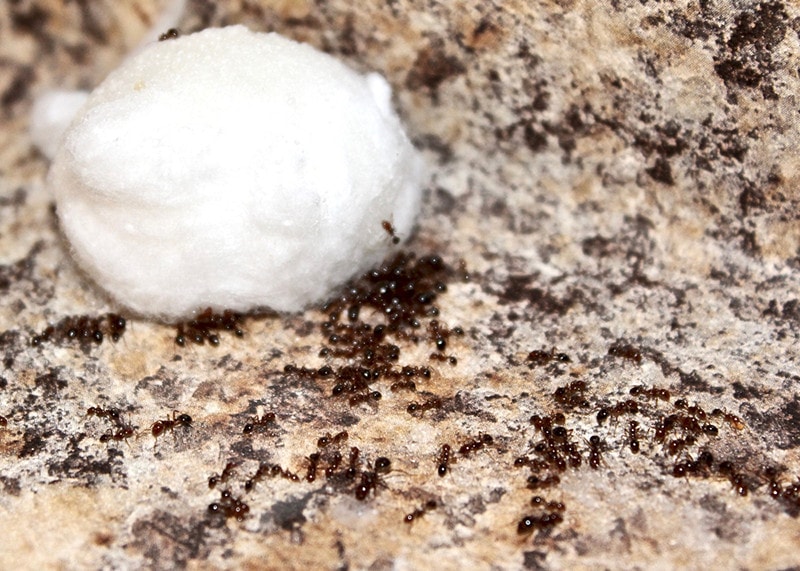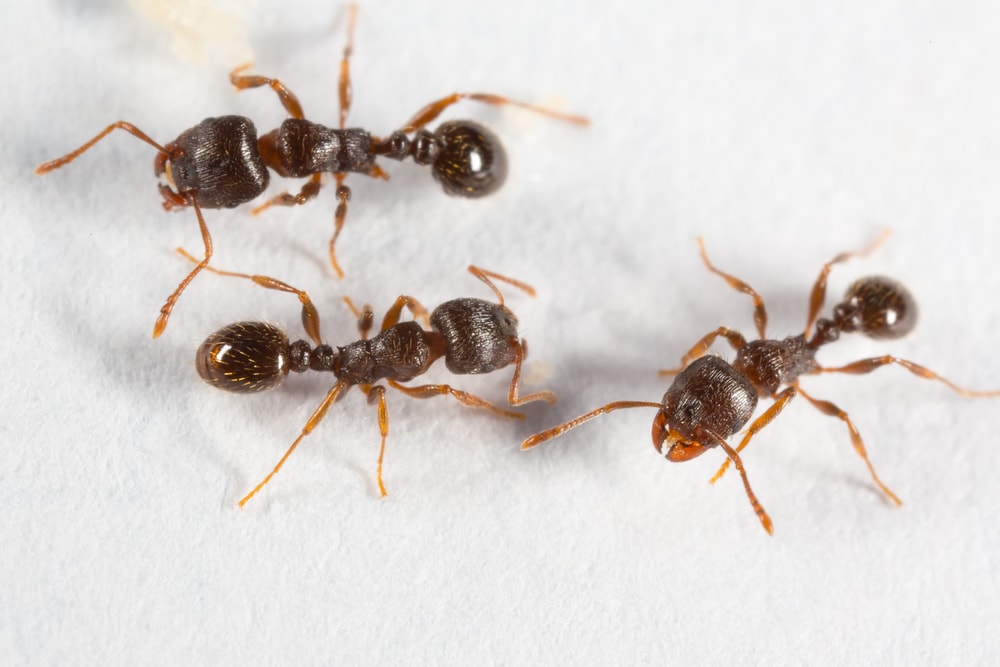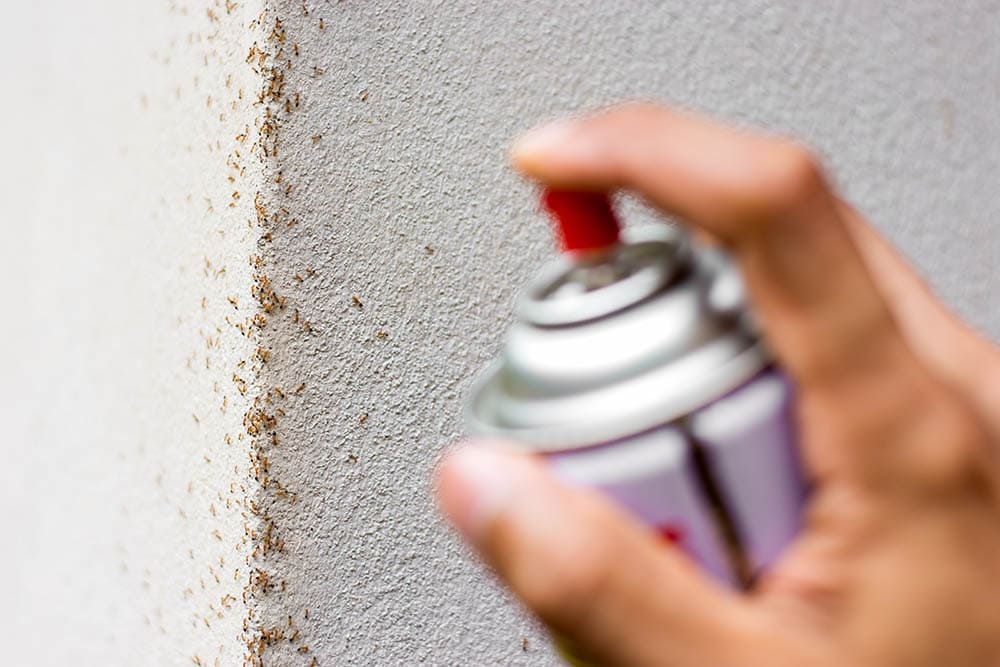How Do Ant Traps Work? Our Ultimate Guide
-
Pete Ortiz
- Last updated:

One of the most commonly suggested methods of eliminating ants is to use store-bought ant traps. These small traps often come with big claims. They say that they can eliminate a whole colony, kill the queen, and leave your home ant free. It seems like a tall order for such a small and affordable product. So how do ant traps work? Are they really effective?
Ant traps work to lure ants in, poison them, and hope that they bring the poison back to the source. In many cases, they are very effective. Here is everything you need to know about ant traps for pest management.
Content covered in this article:
- How Does It Work?
- What Are the Different Types of Ant Trap?
- Where Are They Used?
- Advantages of Ant Traps
- Disadvantages of Ant Traps
- Frequently Asked Questions
How Does It Work?
Ant traps work in two phases. First, they lure ants in using specialized ant baits. The bait attracts the ants to the trap, where they eat insecticide and carry it back to their colony. The second phase uses poison to kill the ants. There are various ways the poison works. They can kill ants on contact, they can kill ants after a matter of minutes, or they can kill ants after a matter of days. The slower traps do not give you instant gratification, but it gives the poison more time to work through the ant colony and potentially eliminate the source of the ants. The fast traps give you gratification by letting you see the ants die in your house, but it might not eliminate the queen and the source of the infestation.
Ant traps work by using two things in conjunction: bait and poison. Without the bait, ant traps would just be sticky traps or insecticides.

What Are the Different Types of Ant Trap?
There are a variety of different types of ant traps, but they all strive to do the same thing. All ant traps are designed to bait and kill ants. The actual design, style, and type of pesticide used will differ from product to product. Here are some different kinds of traps you can expect to find on the market.

Styles
- Granular Granular ant traps use powders to bait and kill ants. These powders can be both bait and insecticide. The powder will get onto the ants’ exoskeletons and their feet and be carried back to the colony, where they will kill the rest of the ants.
- Liquid – Liquid ant traps use liquid bait and liquid poison to kill the ants. In these traps, the liquid is picked up by the ants in their mandibles and carried back to the colony. Liquid traps usually use sweet fillers to make the ants think they hit the jackpot with a source of sugary water. Instead, the liquid will work to kill the ants in their home.
- Clear – Clear ant traps let you see inside the trap. This allows you to see if there are ants inside the trap that are eating the bait and poison. This also allows you to see if the trap is still loaded and makes it easier to decide if you need to change the trap or throw it away.
- Enclosed – Enclosed traps are more discreet, but they do not let you see what is happening inside. Some people don’t want to see ants swarming over a choice piece of bait. These traps are usually black and hide the poison and ants inside without you seeing them.
Insecticides

- Abamectin – Abamectin is a chemical in the Avermectin family and is closely related to the antibiotic ivermectin. This chemical is a popular insecticide and is very effective at eliminating ants.
- Borate – Borate is a powder insecticide that is used to kill bugs of all kinds. Borate is a bluish-green color and is even used to coat surfaces to keep bugs away. In certain parts of the country, borate is put on lumber to kill termites if they enter a home. Borate is safe for humans to handle but deadly for ants.
- Fipronil – Fipronil is an insecticide that works to overload an ant’s nervous system. This chemical disrupts key parts of an ant’s brain and eventually kills them. This is a good choice for ant traps because it will confuse the ants and make it less likely for them to remember where they are as well as make it harder for them to return to your house after they leave.
- Hydramethylnon – Hydramethylnon can be used as a powder or a grain. This is a very common insecticide that is used on everything from sugar ants to cockroaches to fire ants. The powdered variety can be sprinkled directly onto ant piles or colonies to induce death. In traps, the ants will carry the powder or liquid back for you.
Where Are They Used?
Ant traps can be used virtually anywhere. They are used in residential, public, and commercial spaces. Since ant traps are passive, they are easy for regular people to use. For example, a teacher might put an ant trap in the corner of the classroom without having to disrupt the day or contact the administration to hire an exterminator.
You can find ant traps in homes, offices, classrooms, restaurants, and more. Ant traps are often placed along the perimeter of a room or in the corners where ants are most likely to enter. If you know what to look out for, there are a number of places where you can find ant traps being deployed. Ant traps are, unsurprisingly, used in places where ants are common.
Advantages of Ant Traps
Ant traps have a number of distinct advantages. First, they are cheap and plentiful. You can find ant traps almost anywhere for just a few dollars. They have the potential to eliminate the source of your ant infestation thanks to slow-acting poisons that could reach all the way back to the offending queen. Ant traps are also passive. You just need to set them up and then pick them up after a week. You do not need to go hunt down the ants. The ants will come to you and pick up the poison all on their own.

Disadvantages of Ant Traps
Ant traps have a few downsides compared to other pest control methods. First, they do not work as quickly as some people like. Even with effective traps, ants can linger for some time as the poison works at killing the source of the ants. Traps also do not work on all types of ants. Some ants are immune to the bait, and other ants are more resistant to the slow poison. That means that some infestations will not be heavily affected by the use of ant traps. Ant traps can also be unsightly and let people know that you have an ant problem which might not be ideal, especially for certain businesses.
 Frequently Asked Questions
Frequently Asked Questions
How Long Do Ant Traps Take to Work?
Each trap will have a different period of time that it needs to be effective. Some traps work in minutes, and other traps are designed to work over the course of a few days. The length of time it takes to start working depends on the type of insecticide and the level of infestation. More ants mean more chances to bring the poison home, while fewer ants might distribute the bait more slowly. You should start to see appreciable results after a week of using ant traps.
How Effective Are Ant Traps?
Ant traps can be very effective if they are used properly. Unfortunately, not all ants are susceptible to traps. Some ants simply ignore the traps. Other ants are resistant to the insecticides most commonly used in standard ant traps. That means that as long as the traps are geared toward your particular ants, they will work very well. Check the label to see what kind of ants each trap is best suited to targeting before buying them.
Where Should I Place My Ant Traps?
You should place your ant traps along the pathways that the ants are traveling along. Ants like to travel in lines and are often coming from somewhere outside and going towards a source of food or water. If you can find these pathways, they are the best places to put traps. That makes it the most likely that the ants will stop and investigate your traps. The more ants you put the trap near, the better. You can also put ant traps near openings in your house where you see ants entering with hopes that the trap will distract them before they move farther into your house.
Can Ant Traps Eliminate a Whole Colony or Infestation?
Yes. The most effective ant traps can eliminate an entire colony, but this does not always happen. For an ant trap to kill a colony, the poison has to be thoroughly distributed, it has to be effective against your particular type of ant, and the poison has to make it all the way back to the queen. If the poison reaches the queen, it will die, and the colony will decrease and disperse. Even if an ant trap does not kill a whole colony, it can heavily reduce the number of ants in the area. If enough ants get disrupted, the colony might relocate or change its patterns and leave your home alone.
 Conclusion
Conclusion
Ant traps have a lot of big language and big claims around them. Each trap has different chemical makeups and active ingredients, but they are all working on the same principle. Lure ants in, poison them, and send them home. This is a well-known way of reducing the number of ants entering your home and could even potentially kill the entire source of your infestation. If you want to give ant traps a try, there is no reason not to. They are cheap, easy to get, and effective.
See also:
Featured Image Credit: NancyP5, Shutterstock
Contents


